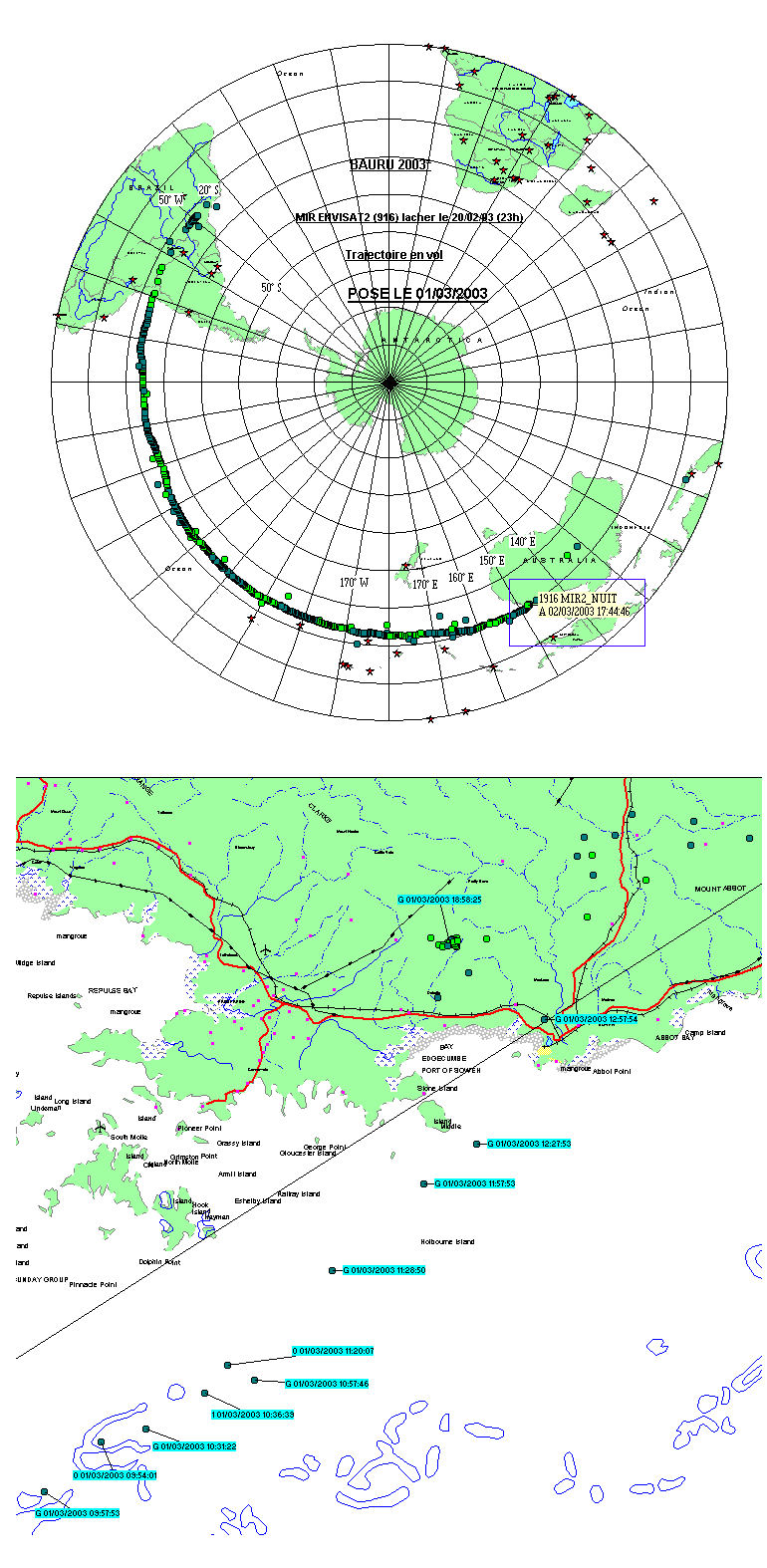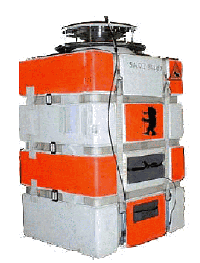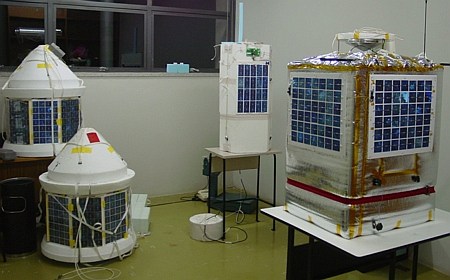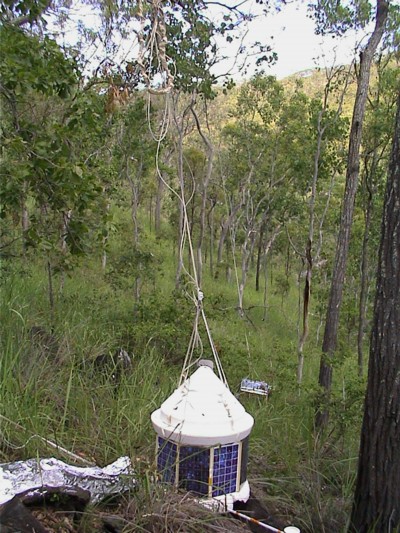Purpose of the flight and payload description
The main payload was SAOZ an UV-visible spectrometer able to provide vertical profiles of O3, NO2, OClO, BrO and H2O by solar occultation during ascent of the balloon (or descent) and from float at 30 km during sunset (or sunrise). The balloon version of the SAOZ instrument is very similar to the one used for ground-based measurements of total ozone and NO2.
It is composed by a commercial flat field, 360mm, holographic grating spectrometer equipped with a 1024-diode linear array and an entrance slit of 50 µm. A simple conical mirror replaces the gondola orientation or sun tracker systems generally used on large balloon platforms and is driven by an on-board computer, connected to a PTU (Pressure, Temperature and Humidity) sensor, a GPS (Global Positioning system ) for the localisation (Altitude, latitude and longitude) and an Argos transmitter for the recovery of the payload after cut-down and descent under parachute.
At left can be seen a picture of the standard package. The weight of the instrument is about 20 Kg and is contained in a insulated box with only a small aperture in the top for capture the solar rays. It's currently flown in three configurations, SaOZ-Standard, SAOZ-BrO and SAOZ-H2O each tuned to a different wavelength for measurements of different atmospheric constituents.
Details of the balloon flight

Balloon launched on: 2/20/2003 at 23:00
Launch site: Meteorological Research Institute, Baurú, Sao Paulo, Brazil
Balloon launched by: Centre National d'Etudes Spatiales (CNES) / GLB
Balloon manufacturer/size/composition: Montgolfier Infrared 45.000 m3
End of flight (L for landing time, W for last contact, otherwise termination time): 3/2/2003
Balloon flight duration (F: time at float only, otherwise total flight time in d:days / h:hours or m:minutes - ): 10 d
Landing site: In a small mountain area S of Townsville.
End of flight over a very high convective system over the Australian Great Barrier Reef.
As the mission was performed using a long duration infrared MIR balloon the SAOZ payload was fitted with specially built solar panels that allowed an autonomy of near two months.
An additional system onboard was NARCISSE. It was the nickname of a balloon gondola developed by CNES around a control process unit able to support interface with all Inmarsat services, and Iridium or Thuraya satellite network as well. This was the first technological flight that used an Inmarsat terminal C which can support in two ways, store and forward messages at a data rate of 600 bits per second. During the 3 turns around the earth, the system worked well, and demonstrated its ability to handle change over from one geostationary spacecraft to the next, when balloon shift Oceans. Moreover this system provided high telemetry rate (Mbits) or telecommand capability, and greatly increase the performances of the scientific payloads.
External references
- HIBISCUS campaign web site Laboratoire Atmosphères, Milieux, Observations Spatiales LATMOS
- MIPAS Ozone Validation by Stratospheric Balloon and Aircraft Measurements 2nd Workshop on the Atmospheric Chemistry Validation of ENVISAT, 2004
221If you consider this website interesting or useful, you can help me to keep it up and running with a small donation to cover the operational costs. Just the equivalent of the price of a cup of coffee helps a lot.




